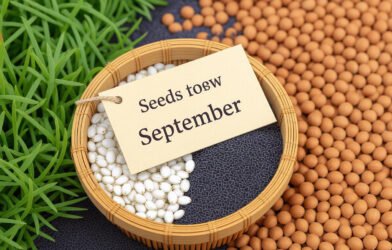Digital marketing evolves at a rapid pace, and staying ahead requires understanding the latest shifts in technology and consumer behavior. In April 2025, new strategies and tools shape how businesses connect with their audiences. Iy dives into the top digital marketing trends for April 2025, offering insights to help brands strengthen their online presence.
The Importance of Staying Updated with Trends
Digital marketing is a moving target. Search engines update algorithms, social platforms introduce new features, and consumer preferences shift. Staying informed about these changes helps businesses reach their target audience effectively. In 2025, the focus is on creating seamless, engaging experiences that align with user expectations. By adopting the latest trends, companies can improve their visibility, drive traffic, and boost conversions.
Top Digital Marketing Trends for April 2025
Voice Search Optimization Takes Center Stage
Voice search continues to grow in 2025, with devices like Amazon Alexa and Google Assistant becoming household staples. Nearly half of all searches are now voice-based, as users prefer speaking natural, conversational queries. This shift challenges traditional keyword strategies, pushing marketers to focus on long-tail phrases that mirror spoken language. For example, instead of targeting “coffee shop,” businesses optimize for “where’s the best coffee shop near me.” Fast-loading websites are also critical, as speed influences voice search rankings. Local businesses gain the most from this trend by ensuring their Google Business Profiles are accurate and complete, helping them appear in relevant voice search results.
Enhancing Local Visibility Through Voice
Local businesses thrive with voice search optimization. Customers often ask for nearby services, like restaurants or stores, making local SEO a priority. By including specific location details, such as neighborhood names or landmarks, businesses increase their chances of being found.
AI-Powered Content Creation Gains Momentum
Artificial intelligence transforms how marketers create content in 2025. Tools like Jasper and Surfer streamline tasks such as writing blog posts, crafting ad copy, and analyzing performance. These tools save time by generating drafts or suggesting keywords based on search trends. However, human oversight ensures content remains authentic and aligned with brand values. AI excels at personalizing content to match user preferences, making campaigns more effective. For instance, AI can analyze customer data to tailor email subject lines, increasing open rates. Combining AI efficiency with human creativity delivers content that resonates with audiences while meeting SEO standards.
Personalization Through AI Analytics
AI’s ability to analyze user behavior takes personalization to new heights. By studying browsing habits or purchase history, AI helps marketers deliver targeted ads or product recommendations. This approach creates a more engaging user experience, as customers feel understood by brands. Businesses using AI analytics see higher engagement and conversion rates, as campaigns align closely with individual needs.
Video Content Drives Engagement
Video remains a powerhouse in digital marketing for 2025. Platforms like TikTok, Instagram Reels, and YouTube Shorts dominate, as users gravitate toward short, engaging videos. These formats capture attention quickly, delivering value in seconds. Businesses that share tutorials, product demos, or behind-the-scenes clips see higher engagement than those relying on static posts. Adding subtitles is essential, as many viewers watch without sound. Strong calls-to-action in videos also guide users to websites or products, boosting conversions. Hosting videos on YouTube and embedding them on websites improves SEO by enhancing user experience, a factor search engines prioritize.
Maximizing Video Impact with SEO
Videos not only engage users but also improve search rankings. Optimized video titles, descriptions, and tags help search engines understand content, increasing visibility. For example, a retailer posting a “how to style summer outfits” video with relevant keywords attracts more clicks.
Local SEO Targets Nearby Customers
Local SEO remains a cornerstone for businesses with physical locations. In April 2025, hyper-local targeting grows as consumers search for solutions in their immediate area. Optimizing Google Business Profiles with accurate details, such as addresses and customer reviews, helps businesses stand out. Using location-specific keywords, like “dentist in Downtown Chicago,” drives targeted traffic. Building backlinks from local directories or community websites further strengthens local rankings. Consistent name, address, and phone number (NAP) citations across platforms ensure search engines trust the business’s information, improving its chances of appearing in local searches.
Building Trust with Local Reviews
Customer reviews play a big role in local SEO. Positive reviews on Google or Yelp signal credibility to both users and search engines. Encouraging satisfied customers to leave feedback and responding to reviews builds trust. For example, a café responding thoughtfully to a review shows it values customer input, fostering loyalty and improving local search performance.
Answer Engine Optimization (AEO) Rises
Search engines and AI platforms like ChatGPT prioritize direct, concise answers in 2025. Answer Engine Optimization (AEO) focuses on creating content that appears in featured snippets or AI-generated responses. To succeed, businesses craft content that directly addresses user questions. For instance, a blog post about “best running shoes” should compare brands clearly and concisely. AEO shifts the focus from keyword stuffing to understanding user intent, ensuring content meets specific needs.
Structuring Content for AEO Success
Structured data, such as schema markup, enhances AEO efforts. By organizing content with clear headings and concise answers, businesses improve their chances of appearing in AI summaries. For example, a FAQ section answering common questions in simple language aligns with AEO goals. This approach ensures content is both user-friendly and search-engine-friendly.
User-Generated Content Builds Authenticity
User-generated content (UGC), like reviews, testimonials, and social media posts, fosters trust in 2025. Consumers trust peer recommendations over brand messages, making UGC a powerful tool. In fact, UGC influences 80% of purchasing decisions, as it feels authentic. Businesses encourage customers to share reviews or post about products on social platforms. Featuring customer stories or unboxing videos on websites adds fresh content, boosting SEO. Engaging with users on forums like Reddit also builds community trust, creating a loyal customer base.
Leveraging UGC for Engagement
To maximize UGC, businesses actively engage with their audience. Running contests where customers share photos with products or encouraging hashtag campaigns on Instagram generates valuable content. Displaying UGC on product pages increases engagement and signals authenticity to search engines, improving rankings.
Omnichannel Marketing Creates Seamless Experiences
Consumers interact with brands across multiple platforms, from social media to email. In 2025, omnichannel marketing ensures a consistent experience across all touchpoints. This approach meets users where they are, increasing conversions. For example, a customer might see a product ad on Instagram, visit the website, and receive a follow-up email with a discount. Consistent branding and messaging across channels build trust. Tracking user behavior allows businesses to personalize content, making each interaction feel tailored. Integrating paid ads with organic content maximizes reach and impact.
Tracking Omnichannel Performance
Analytics tools track user interactions across platforms, helping businesses refine their strategies. For instance, a retailer might notice that email campaigns drive more sales than social ads, prompting a shift in focus. By analyzing performance data, businesses optimize campaigns to deliver the best results, ensuring every channel works together seamlessly.
Preparing for Digital Marketing Success
To thrive in April 2025, businesses must prioritize mobile-first design, as most users browse on smartphones. Fast, responsive websites improve user experience and search rankings. Analytics tools help monitor campaign performance, allowing quick adjustments. Partnering with an SEO agency keeps businesses updated on algorithm changes. Creating high-quality, user-focused content that aligns with search intent remains the foundation of success. Regularly updating blogs or product pages with fresh information maintains relevance and improves rankings.
Conclusion
Digital marketing in April 2025 demands adaptability and a focus on user experience. Voice search optimization, AI-powered content, video marketing, local SEO, AEO, user-generated content, and omnichannel strategies shape the industry. By embracing these trends, businesses connect with audiences, improve search rankings, and drive growth. Staying proactive, monitoring performance, and prioritizing user intent ensure long-term success in this fast-changing field.














